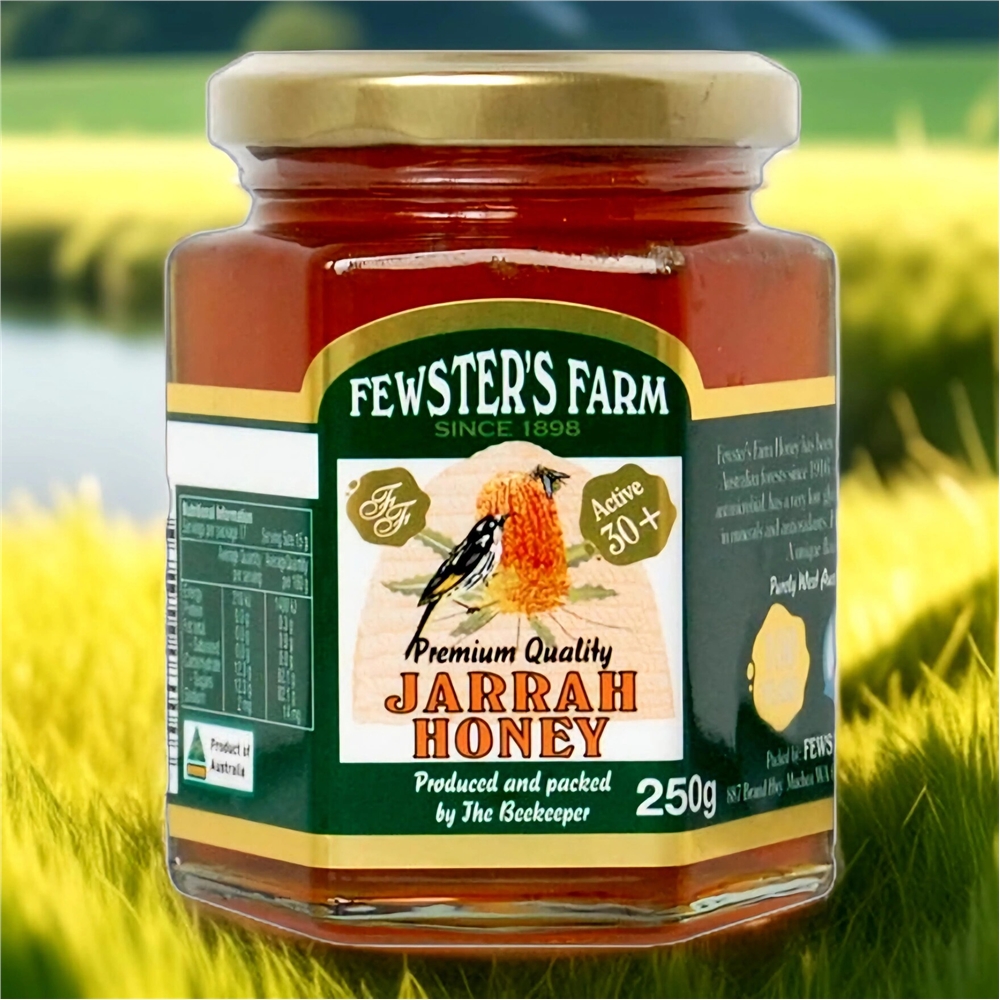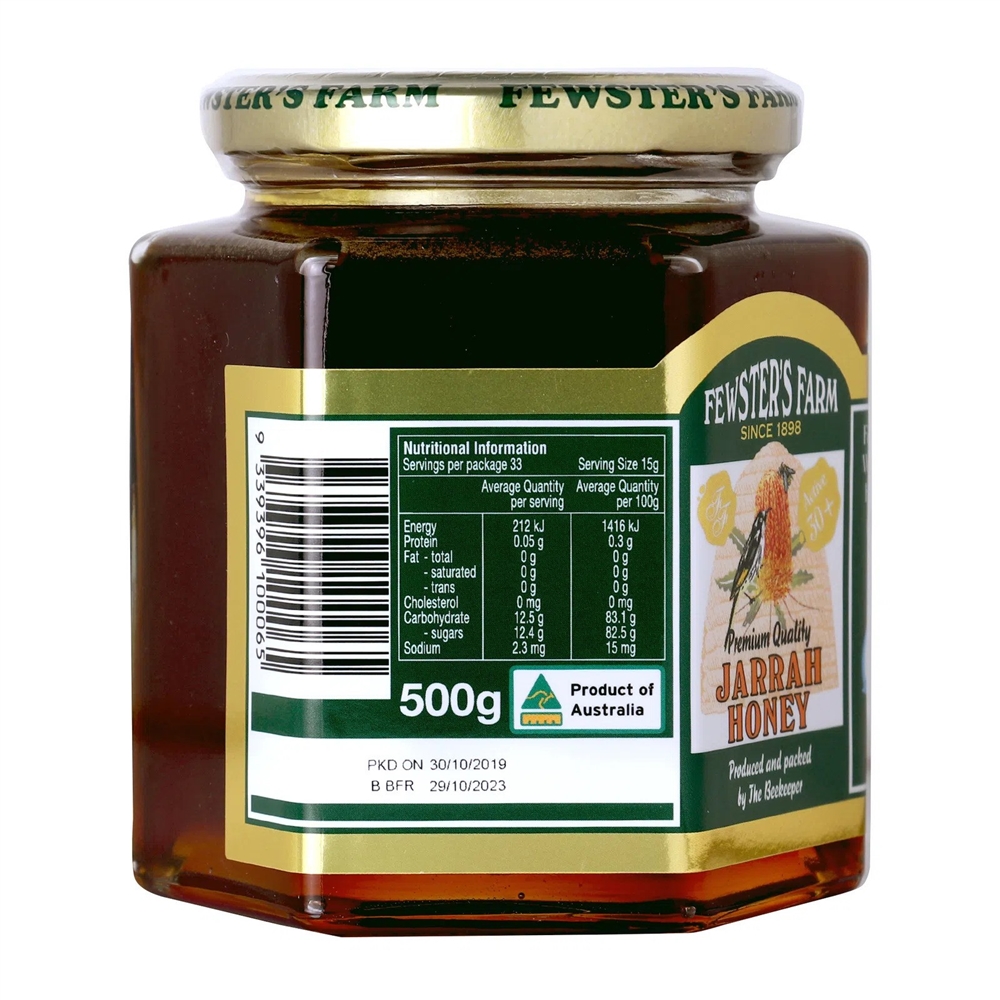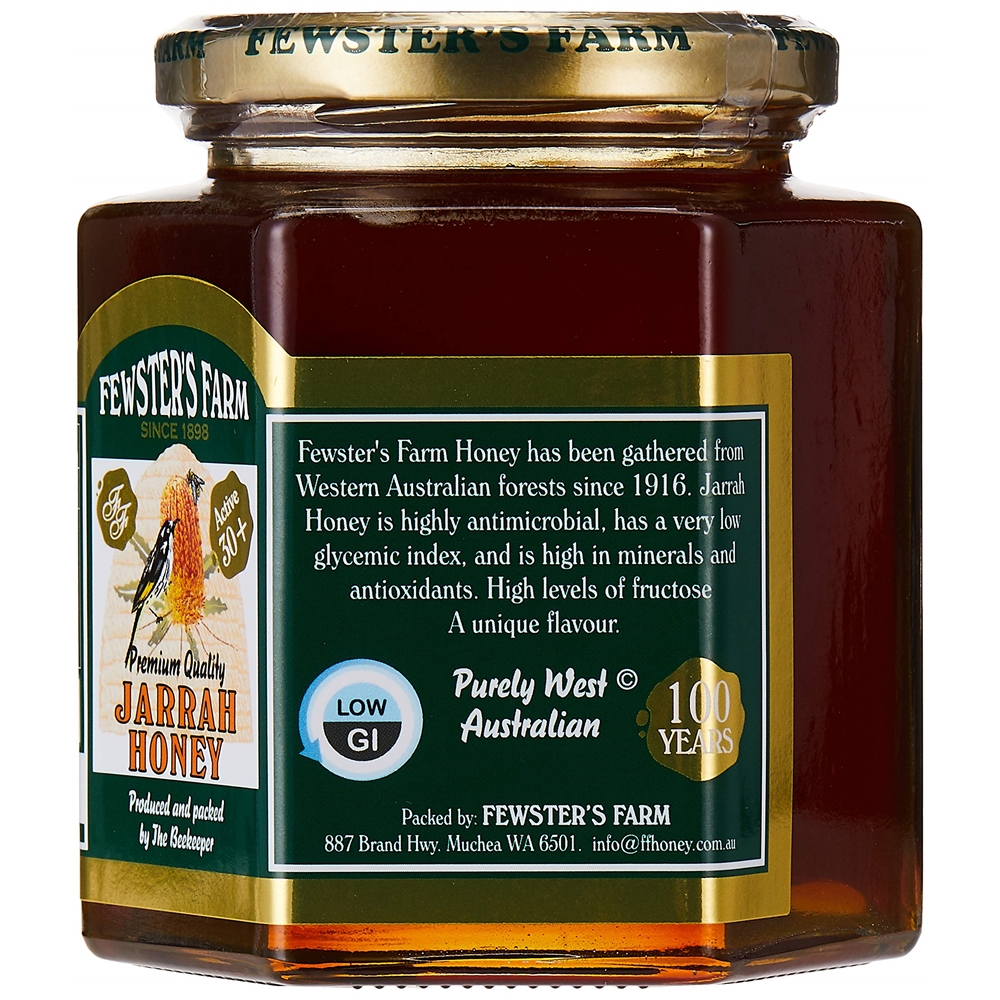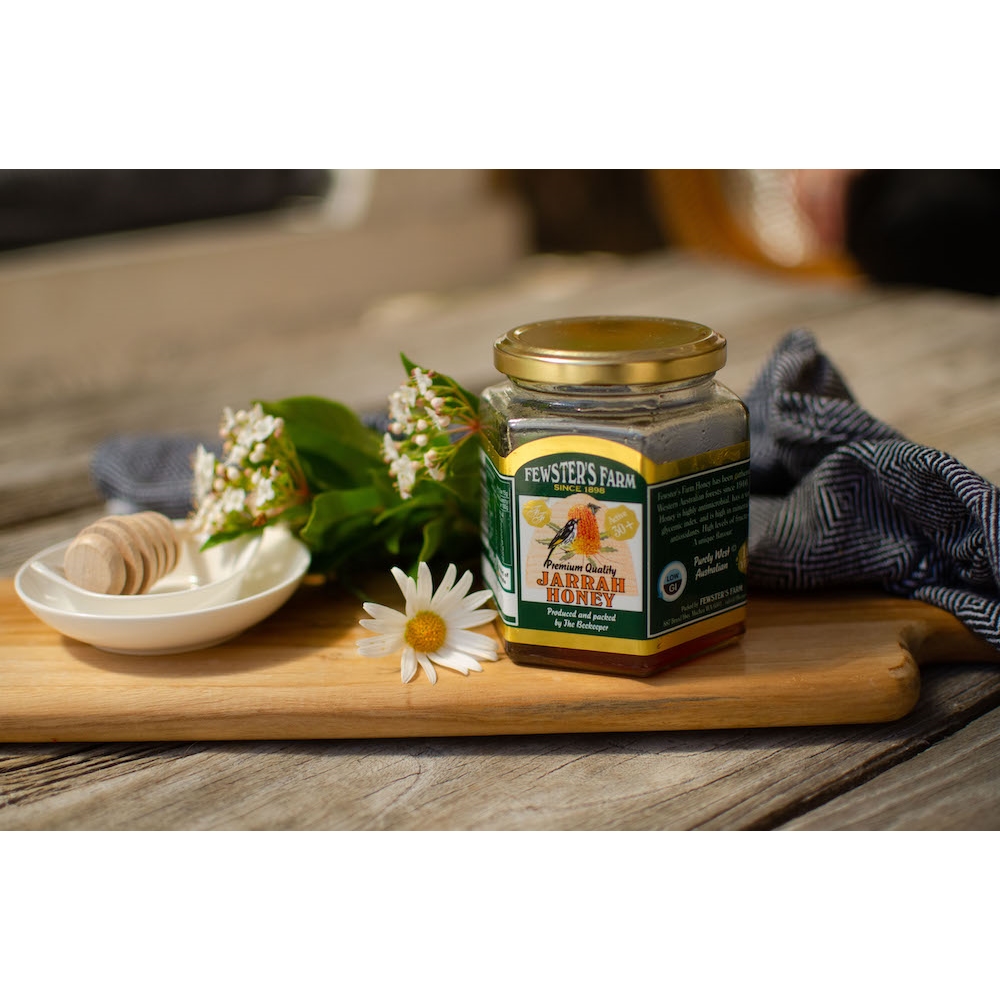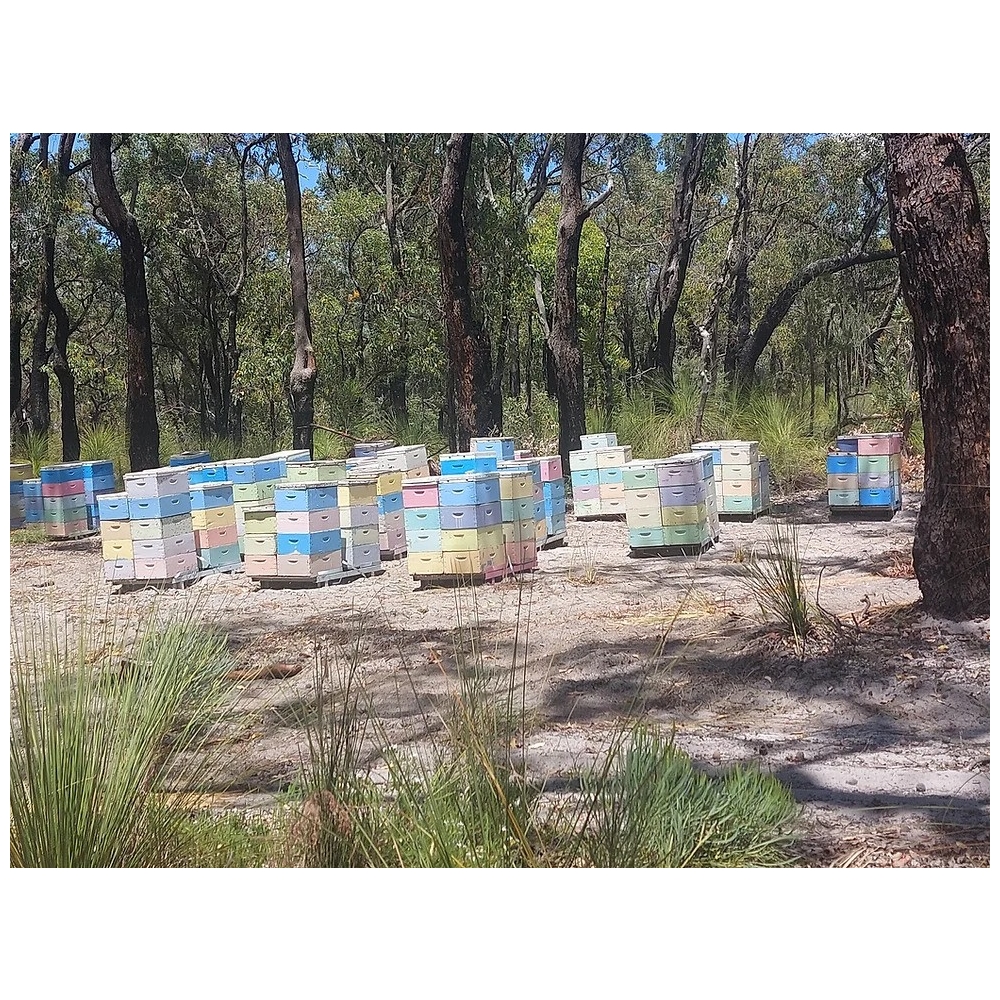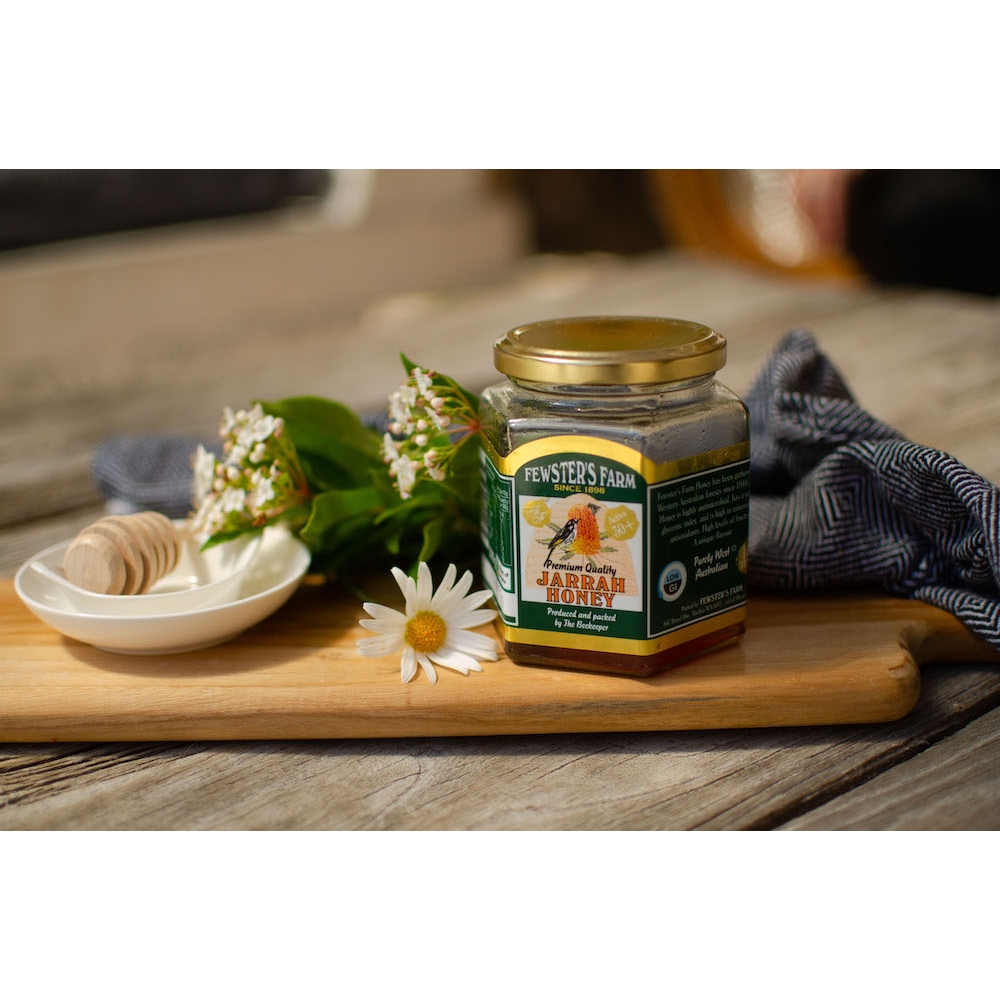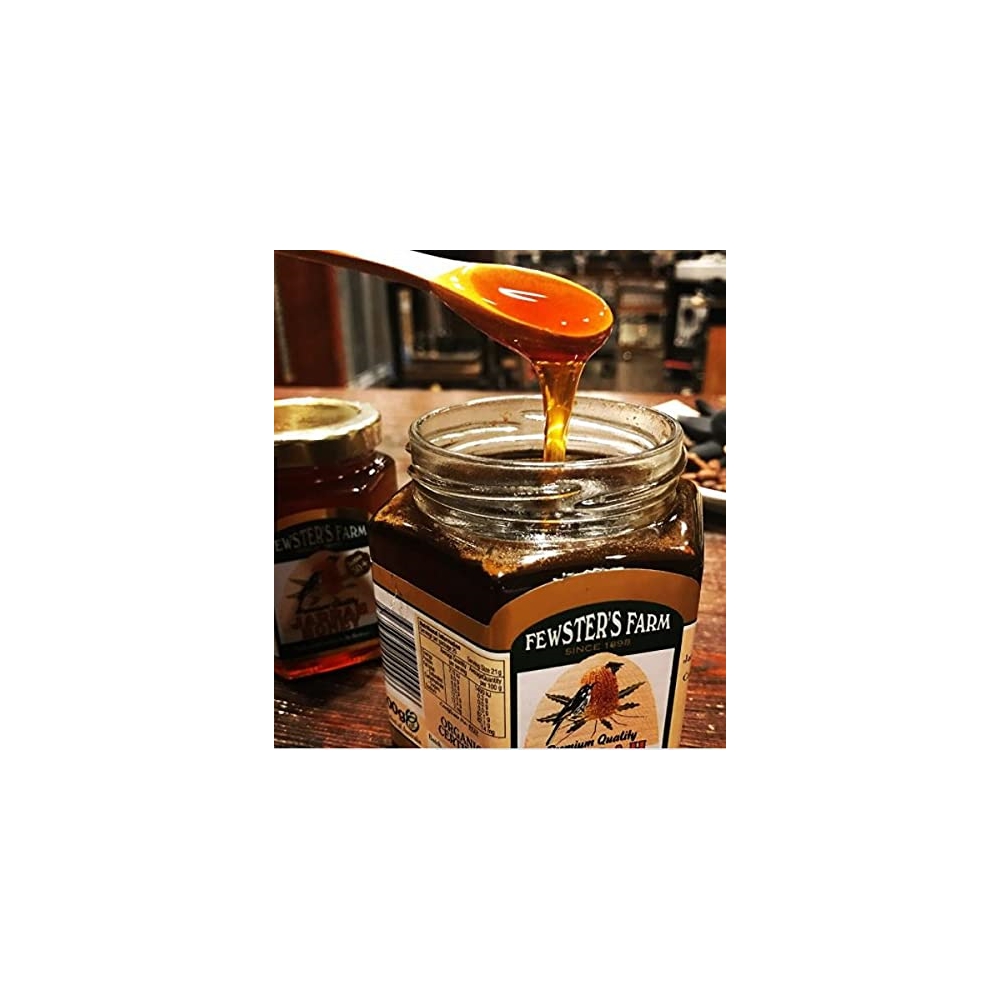Fewster's Farm TA 30+ Jarrah Honey 500g - Jarrah Honey is nectar gathered by bees from the flowers of the Jarrah Tree.
Free Standard shipping Australia-wide for for orders above AUD $60
Same day dispatch for orders received by 3 PM
For all international addresses shipping will be calculated at checkout.
Payment: ![]()
Certified Raw Jarrah Honey TA 30+ - Equivalent to Manuka MGO 1640+ (UMF30+ / NPA30+) - 500g Jar
Jarrah Honey TA30+ is unique and only found in Western Australia. Jarrah honey with Anti-microbial activity TA30 + is dark thick and has a caramel flavour, ideal for ocasional consumption and skin application. Jarrah honey contains high levels of antioxidants and anti-bacteria, which have anti-aging effects and high germ-fighting capabilities. Jarrah honey has become highly sought due to its medicinal properties and low glycemic index.
This honey comes from older and bigger Jarrah trees giving it an extra health boost and that extra strong flavor and texture that Jarrah honey is becoming famous for. This honey is also perfect for healing, as the honey has the highest level of enzymes.
WHAT IS TOTAL ACTIVITY (TA) IN YOUR HONEY?
Total Activity in our honey is fungal and bacteria killing scale. The higher the TA, the better to help fight the fungal and bacterial growth. Our honey carry more than TA 35. TA10+ will provide a good benefits but above TA+ is better.
HOW IS TA- Total Activity IN THE HONEY ANALYZE?
Hydrogen Peroxide and Non Peroxide equals Total Activity.
"Peroxide Activity (PA) is the natural antimicrobial and antifungal power that bees have developed over millions of years of evolution to protect their honey from microbial infection as it forms (ripens) in the beehive. The PA results from a chemical reaction between a bee enzyme called glucose oxidase (GO), glucose and water. The reaction proceeds for as long as the unripened honey contains free water and yields a low concentrations of hydrogen peroxide that is lethal to the microbes attempting to colonise the honey, plus gluconic acid which also inhibits microbial growth.
PA is active as the nectar ripens but stops when the honey has formed and is dehydrated. Subsequent preservation of the honey is achieved by the low water activity and acidity. In most honeys, the GO is depleted by the time the honey ripens so it has no remaining PA. High PA honeys have residual GO which is reactivated when the honey is diluted with water, for example when you eat it (and it mixes with saliva) or put on a skin wound.
High PA honey is highly effective against many bacterial and fungal infections, plus some parasites and viruses. The PA is gentle on human tissue and the digestive system, so it can be used as an antiseptic drink (diluted or raw), and topically. But please always consult your doctor before using high PA honey to treat a wound, as the effectiveness can be diminished in situations where the enzyme catalase is present (for example if blood is present).
PA also has no adverse effect on the taste of the honey.
Non-Peroxide Activity (NPA) includes all the antimicrobial power that is derived from phytochemicals in the nectar that bees collect from flowers, plus the acids in the honey. Trees produce many phytochemicals to protect themselves from bacterial infection and other purposes, and some of these chemicals can be present in the nectar. When the bees convert the nectar to honey, the chemicals become much more concentrated and Active. However, these chemicals often give the honey a bitter or antiseptic flavour.
The most potent NPA phytochemical is methyl glyoxal (MGO) which is found in Manuka honey. NPA is typically unaffected by catalase.
MGO can be harmful to people with diabetes. It is recommended that only Manuka honey with UMF15 (MGO 515) or lower be eaten on a regular basis. Honey with higher UMF values should be eaten intermittently or used topically.
Manuka vs Jarrah Honey
Jarrah honey is not as well-known as Manuka honey, Jarrah honey is superior to Manuka in the antimicrobial, healing power stakes.
Jarrah honey is rarer, have a limited availability and are costlier, but worth it. They’re considered to have 50% more antimicrobial prowess than Manuka and are available right here. Jarrah and Red Gum honeys are amongst the highest rated TA honeys on the market.
Manuka MGO 1640+ vs Jarrah Honey TA30+ Cost Comparision
Even though Jarrah honey is superior to Manuka in the antimicrobial, healing power, It is not as expensive as Manuka Honey and is almost 80% cheaper then equivalnet strength of Manuka Honey.
| Honey Jar Size | Jarrah Honey TA30+ | Manuka Honey MGO 1640+ (UMF30+) | Comments |
| 250g Jar | $40 | $199 | Jarrah Honey costs 80% less than manuka honey for same strength |
| 500g Jar | $66 | $400 | Jarrah Honey costs 80% less than manuka honey for same strength |
CAUTION: Not suitable for infants under 12 months old
STORAGE: Cool place below 30 degrees Celcius away from direct sunlight. Do not refrigerate.
Package Content: 1 Jar of 500g TA30+ Active Jarrah Honey

